#ra whanau
Text

Happy Birthday to the legend that is Jemaine Clement! Thank you for sharing your amazing talents with the world making many people, including this nerd, incredibly happy to be alive during these crazy times! 🎉🎂🥳
#jemaine clement#happy birthday#or#ra whanau#I hope that’s right#yay I had time to make a collage#I’m a noobie#not used to doing this on a phone#I’m an old lady#but not really#i’m ridiculous
22 notes
·
View notes
Photo



(via "Ra Whanau Ki a koe, Happy birthday to you, " Canvas Print for Sale by carole hirst), I love this ad so does my great niece who was model
#findyourthing#redbubble#Ra Whanau Ki A koe#te re#Maori#happy birthday New Zealand Aotearo art of CAHirst
0 notes
Photo

Ra whanau ki a koe Son, @matangireia_98 (although cause you are in NY it’s not till tomorrow for you,lol) you know the know, keep doing what you are doing, have a great day, love you 💙🙌🏼💚 Ps:here’s a pic of when we use to do hakas…… lol (at New York, city) https://www.instagram.com/p/CnXrP_vS3fp/?igshid=NGJjMDIxMWI=
0 notes
Text
Whanau, hapu, iwi: Kinship structure
https://teara.govt.nz/en/tribal-organisation
“Generations ago, canoes sailed by Māori ancestors set out from East Polynesia and landed in New Zealand. From these founding peoples came the iwi (tribes) that form the structure of Māori society. Within each iwi are many hapū (clans or descent groups), each of which is made up of one or more whānau (extended families). The bond that holds them together is one of kinship, both with a founding ancestor and with the many members of their iwi, hapū and whānau today.”
——
Kinship
https://teara.govt.nz/en/nga-mahi-tika/page-2#:~:text=Each%20tribe%20is%20made%20up,are%20even%20more%20closely%20related.
“Connection with iwi and hapū
Although Māori in the 2000s are a highly urbanised people, most retain some links with their original tribal territories and return there for ceremonial and social events. Tribal identity therefore continues to hold great importance for many Māori, and the distinctive customs and traditions of their own iwi (tribe) may be upheld and retained even when living in a predominantly non-Māori society. Each tribe is made up of a number of hapū (sub-tribes), whose members can generally claim descent from a common ancestor. In turn, each hapū is made up of a number of whānau (extended families), who are even more closely related.
Tangata whenua
Traditionally, every hapū can claim rights to specific marae within its tribal territory. Those marae, and the sites and tribal lands associated with them, are known as the tūrangawaewae (standing place) of the members of the hapū. Those members hold the highly valued status of tangata whenua (people of the land), meaning they can host gatherings on the marae, hold weddings and funerals, and generally regard those specific marae as their shared property.”
——
Citation of a study: A New Maori Migration: Rural and Urban Relations in Northern New Zealand
By Joan Metge
——
Kaitiakitanga: Guardianship
https://teara.govt.nz/en/kaitiakitanga-guardianship-and-conservation#:~:text=Kaitiakitanga%20means%20guardianship%20and%20protection,as%20a%20lake%20or%20forest.
“Understanding kaitiakitanga
Kaitiakitanga means guardianship and protection. It is a way of managing the environment, based on the Māori world view.
A kaitiaki is a guardian. This can be a person or group that cares for an area such as a lake or forest. They are given that role by the local iwi.”
“Māori world view
In the Māori world view, people are closely connected to the land and nature. Kaitiakitanga is based on this idea of humans as part of the natural world.
Traditional practices
In the past, people followed traditional practices when they were hunting, fishing, growing or finding food. These helped them to care for the environment.
They included:
temporary bans (rāhui) on taking food from an area
using the lunar calendar (maramataka) to decide when to plant and harvest
taking only what was needed
hunting and fishing only for food, not as sport
using bird snares at the right time – for example, not when the birds were breeding.”
“Mana, tapu and mauri
Mana means spiritual power. If a forest has mana, it will have plenty of flowers, fruit and birds.
Tapu can mean spiritual restriction. Sometimes rāhui (restrictions) are needed to help the mana of the forest. A rāhui might stop people taking birds, fish or fruit from a certain area, or at a certain time.
Mauri means life force. This must be protected in forests, rivers, gardens, lakes and the sea. Special mauri stones, which tohunga (priests) said prayers over, were used to preserve this force.
Kaitiakitanga today
Today there is growing interest in kaitiakitanga. Iwi are restoring their environment and culture, and using traditional ideas in the modern world.
Ngāi Tahu are guardians of pounamu (greenstone) in the South Island.
Te Āti Awa ki Taranaki made a claim to the government to stop pollution in their fishing areas.
Four iwi (Ngāti Kahungunu, Rangitāne, Muaūpoko and Ngāti Raukawa) have come together to stop the Manawatū River being polluted.
The Te Rarawa people are working to save the kūkupa (New Zealand pigeon).
Kaitiakitanga has also been included in some laws, such as the Resource Management Act 1991.”
None written by me - APA in text citation.
——
Maori believed people belonged to the land, and not vice versa. It is not our to take, but rather it’s a spiritual mindset of being honoured to be able to tread on the soil of Aotearoa, treating it with value and respect.
What I understand from this is that it’s not exactly what I assumed the definition to be, so the ideologies don’t necessarily match the purpose of my device, but I can still use this as one of the Maori world views for my design.
0 notes
Photo



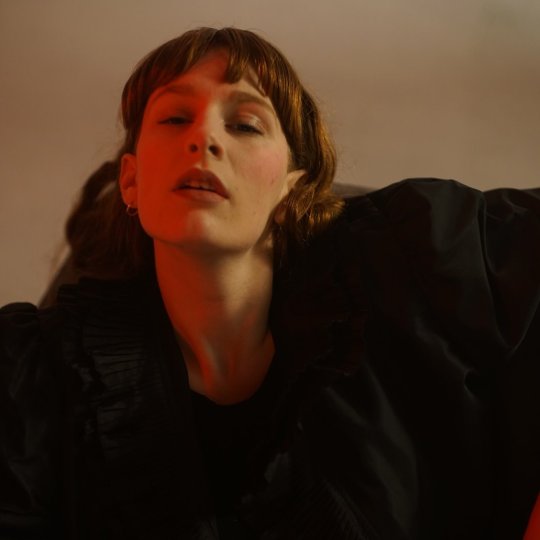
Was approached by Elena Šiljić (a Tāmaki based producer) to apply to NZ on air for funding to be produced by her. This would potentially allow for 10k towards the production of my next body of work.
The process involved creating a new soundcloud with my strongest demos, providing a bio and CV
https://elenasiljic.bandcamp.com/?fbclid=IwAR0C0uCE12ROQQ-kwVTjxb3sVtKSKI4lEnLENO4yqh1edbDg_WzImZe1vMc
NZ on air Bio
“Bio: Vida Gibson is an interdisciplinary artist, world-builder, polymathic channel, witch and pleasure activist. Their background is rooted in an ecology of performance, combining training in dance, music, theatre and ritual. Their most recent works include: Sweat Dance (video, movement, soundscape) exploring internal hydration, Train Piece (site specific-performance) exploring everyday symbols, and the development of the sonic, performative and visual world of their first original EP Takashi. Vida’s work is an ongoing exploration of the conjunction of performance and music as a spell for collective joy, unity and transmutation, and the role that water (both bodily and environmental) plays within this transformation.
Sound: Raised on 70s soul, afrobeats, jazz and gospel (Stevie Wonder, Aretha Franklin, Fela Kuti etc) Vida’s sound is influenced by a myriad of artists such as Björk, Meredith Monk, Outkast, D’angelo, Sun Ra, Prince and Erykah Badu. Combining the ingredients of their sonic roots in jazz, funk, soul and hiphop, Vida intends to create a sonic signature unique to their essence and upbringing in Aotearoa.
Experience: Much of Vida’s experience comes from their foundations in a creative whanau, with a composer father, choreographer mother and acting brother Vida has learnt much of what they know through exposure to artists they resonate with. Formally Vida has received one years vocal and compositional training at Auckland University’s Jazz school, NZAMD dance training, theatrical training with John Bolton and is currently acquiring a post graduate diploma in Fine Arts (with their EP as the central project) at Massey University. Multiple award winner of Fringe Festival, Vida has experience performing both on screen and stage in venues such as ASB Waterfront and Basement Theatre. Vida is currently focused on working towards their first official music release and gaining experience in performing original compositions.
Soundcloud: https://soundcloud.com/vida-gibson
Full CV: https://humanagency.co.nz/actor-profile/vida-gibson/”
0 notes
Note
happy birthdayyy! (and in my language - hari huritau/ ra whanau ka koe)
QAAHHHHH THANK YOUUUU!!!
2 notes
·
View notes
Text
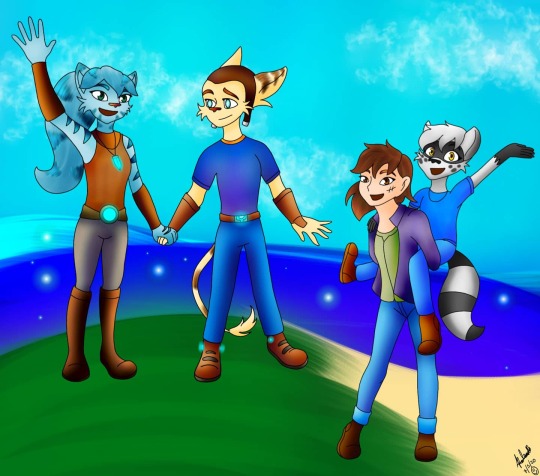
Gift Art - Happy Birthday Mom!!
Despite the different time zones, it's the 9th where I am so hopefully it wasn't too early or too late to post this! :D
It is @chinterra's birthday coming soon or maybe today!! x)
First attempts was to draw Riley and Blind Ratchet, and I hope I did them justice! >:D
☆☆☆☆☆
Maori Version:
Ra Whanau ki a @chinterra!! He tino tumeke taku hoa kua tutaki I a au, a koinei te mea kei te tino mauri koe!! A, ko te tumanako kei a koe tetahi ra me nga aroha koutou katoa. Noho tonu koe mai i nga wa katoa!!
English Version:
Happy birthday @chinterra!! You're an awesome friend that I've ever met, and that's what makes you special!! And I hope you have an awesome day with all your loved ones. You stay awesome as always!!! :D
☆☆☆☆☆
Ellaria, Blind Ratchet, Toni and Riley all belongs to (c) @chinterra
Art belongs to (c)me
(And don't forget to stay tuned for your second gift as well, I couldn't choose one so I decided to do both instead ^^).
#gift art#digital art#for the one and only @chinterra#Blind Ratchet#Ellaria Xenon#Toni Cato#Riley Cooper#HAPPY BIRTHDAY MI AMIGO!!!❤❤❤#RaC ocs#FS oc#final space#ratchet and clank#friends ocs#friends babies#mi art#birthday gift#i hope you have an awesome day!!❤❤❤
13 notes
·
View notes
Note
Exactly, you're on to it! Ta moko signifies a persons mana, relationship with the land, proficiencies, accomplishments, significant events in life, iwi (tribe), whanau (family) and whakapapa (line of decent). Ta moko is (just as you say) culturally significant. Kirituhi is personally significant, usually representing a persons family, and accomplishments/significant events relating to the reason for receiving kirituhi. Kia pai to ra! (Have a nice day!) - Pasifika anon.
Perfect! I’m glad I’m on the right path! Thank you kindly for your time anon! It truly means a lot to me to know I am growing to understand Maori culture in the correct context from people who are actually part of the culture <3
#ask#asks#Anonymous#I also recognise the meaning of mana so not to toot my own trumpet but i think I know what I'm talking about /jk jk hgfkjd
1 note
·
View note
Text




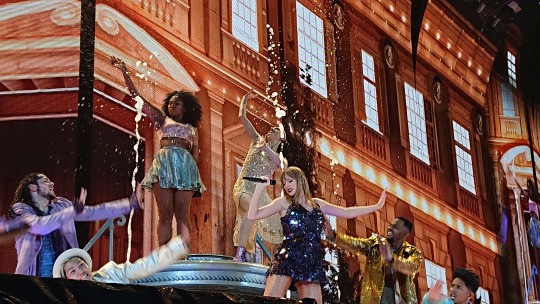



Ra whanau kia koe
Ra whanau kia koe
Ra whanau kia Taylor
Ra whanau kia koe
Happy 30th birthday to this incredible woman.
Your music has been the soundtrack to my decade.
Your concerts a bright light fairytale dream to witness a few times.
I've watched you go from strength to strength through tribulations and grow into a woman who is unapologetic about who she is.
You're an incredible inspiration and spark of life.
May this new year and decade bring forth more great fun.
Enjoy your night with those dearest to you, and thank you for sharing it with fans at Jingle Ball.
#taylor swift#perfectstormscrystalskies#TSwift#taylornation#tswizzle#taylor nation#taytay#Happy birthday Taylor#Taytaythirty
4 notes
·
View notes
Text
1001 Panui Korero | Korero Korero 莲花演说
//
writen by ZHOU Junjun

第一个故事
男人拖着疲倦回到家,妻子问:“怎么这么晚回来?是不是外面有人了?”男人忽然感到非常愤怒地对妻子说:“你怎么这么不理解我?”第二天,他们去民政局换了一本证……
Tuatahi korero
Ka hoki mai te tangata he ngenge i te ngenge me te ngenge, ka ui tana wahine, "He aha koe i hoki ngatahi ai? He tangata kei waho?" Ka ohorere te riri a taua tangata, ka mea ki tana wahine, "He aha koe kaore i tino mohio ki ahau?" I te ra i muri mai, ka haere ratou ki te Tari Taataki Hauora Kua hurihia he tiwhikete ...
第二个故事
课后,老师对学生说:“如果再是这个成绩,我会劝你转校了,跟上你会很吃力。”回家,母亲拿着试卷恨铁不成钢地指责孩子说:“再过一年高考了,你看你该怎么办,你看考得上哪个学校,你看你将来该怎么办!怎么这么不争气呢。”晚间补习,补习老师说:“怎么教了这么多遍,你就是做不对呢?”当晚,学生从补习老师家一跃而下,当场死亡,他才十六岁……
Te korero tuarua
Whai muri i te akomanga, ka mea te kaiako ki nga akonga, "Ki tenei ano tenei karaehe, ka tohutohu atu ahau kia whakawhiti koe ki te kura, ka uaua ana ki a koe kia haere tonu." Ka hoki ki te kainga, ka whakapaehia e te whaea te tamaiti ki te pepa whakamatautau me te kino ki te maitai, ka mea, "Tatou ka haere Te whakamātautau tomokanga o te tau kotahi, kei te kite koe i nga mea e tika ana kia mohio koe, ka kite koe i te kura ka taea e koe te tango, ka kite koe me aha e tika ana koe. I hika koe i hara? "I taua po tonu, ka peke atu te akonga ki te whare kaiwhakaako ka mate i te tuunga. Kotahi noa ana ona tau 16 te pakeke ...
第三个故事
十年寒窗苦读,他是有名的学霸,名企招聘会上,面试官对他说:“介绍下你自己。”他说:“啊……嗯……我……我叫……”面试官说:“对不起,请下一位。”走出门,他靠着墙蹲下,把简历撕得粉碎……
Tuatoru korero
I te tekau tau o te ako pakeke, he akonga mohio ia. I te wa mahi mo nga kamupene rongonui, ka ki atu te kai uiui ki a ia, "Whakauru atu koe." Ka kii atu te kaiawhina, "Aroha, kia koa." Ka toro atu ia ki waho o te tatau, ka tutuki a ia ki te pakitara, ka haa tana tuokiri ...
第四个故事
团队准备整整一月,精心编制各种节目,终于迎来了万众期待的年会。董事长在员工热情的掌声中缓步走上讲台,举起话筒方才发觉演讲稿落在座位上,他望着台下黑压压的人群,一双双亮晶晶的眼睛,忽然觉得呼吸急促,头冒冷汗,双脚发抖……他不禁往讲台中间挪了挪,这一挪,却不小心把话筒掉到了地上,台下一下子热闹起来,传来闷声的笑声。他完全慌了神,已不记得演讲稿的内容,有些尴尬地弯下腰捡起话筒咳了两声说:“哈哈,大家,吃好,喝好!谢谢!”然后像逃荒般地窜下台回到座位,连忙拿起纸巾擦拭满头汗水,剧烈的心跳声在耳畔久久不能散去……
Te wha o nga korero
Ka noho te roopu mo te marama katoa, ka ata whakaemihia e ia nga momo kaupapa, a, ka uru atu ki roto i te huihuinga o te tau kua tino hiahiatia. I ata haere te tiamana ki te konukawata me nga pati mahana a nga kaimahi, ka whakaarahia te whaikorero ki mua i tana kitenga ka hinga te korero i runga o te nohoanga, ka titiro ia ki te mano i raro o te atamira, i ona kanohi kanapa, ka paoho iho te poto o te manawa me te manawa makariri ki tona mahunga. I wiri ona waewae ... Kaore i taea e ia te neke engari ka neke ki waenga o te riu, engari na te ohorere i heke iho i te whaikorero ki te whenua, ka haruru te hunga whakarongo ki te kata. I tino pukuriri ia, kaore i maumahara ki nga kiko o te whaikorero.Na ka piko ia ki raro, ka mau ki te whaikorero, ka haruru rua: "Haha, ta te tangata, kia kai pai, inu inu! Mauruuru!" Katahi ka tuuturu ano ia ka hoki ano he rerenga. Ka u ki ahau ki te nohoanga, ka tangohia e au he tauera pepa ka horoi i taaku maru.Kore te whekau o te ngakau e marara mo te wa roa ...
第五个故事
商业路演现场,他拿着一个团队整整一个月不眠不休做出的商业计划书,已经有20万高粘度粉丝,信心十足。当话筒递到他手上,投资人说:“请用三句话说明你的项目。”他说:“呃……我们做的是……是……”投资人说:“谢谢,请下一位。”他黯然坐下,合作伙伴们都黯然低下了头,拍了拍他的肩膀,起身离去……
Korero tuarima
I te maakete arumoni, i whakahaerehia e ia he ropu umanga mahi kua mahi ana ia mo te marama katoa, ā, kua 200,000 te hunga whakatangi teitei-nui me te tino maia. I te wa i tukuna atu te whaikorero ki a ia, ka ki atu te kaipupuri putea, "Tena koa maarama te whakamaarama i to kaupapa i roto i nga rerenga e toru." Ka kii ia, "Eh ... he aha taatau ... Kotahi. "Noho ana ia i runga o te pouri, ko nga hoa i whakapiko katoa o ratou mahunga, ka patupatua tona pokohiwi, ka whakatika, ka wehe ...
第六个故事
古有贾诩一句话引起百年战乱,亦有张仪三寸不烂之舌抵百万雄狮。历史由人演绎,社会由人诠释,生活由人改变。今天,当我们面对各种繁琐,各种误解,各种质疑,各种矛盾,各种委屈,我们都说,这是人造成的。蓦然回首,三省吾身,这是——沟通——造成的!
Onoono nga korero
I nga tau o mua, na nga kupu a Jia Yi i hua ai te riri, kotahi rau tau o te pakanga, ana ko te arero koretake e toru-huringa a Zhang Yi i haere mai i te miriona nga raiona tane. Ko te hitori e whakamaorahia ana e te tangata, ko te hapori te whakamaoritanga a te iwi, a, ka hurihia te ao e te iwi. I tenei ra, ka whakaekehia e tatou nga momo whakaraerae katoa, nga momo whakama kore, nga momo feaa, nga momo whakahē katoa, nga momo pouri katoa, e kii ana tatou katoa na tenei i pa mai ai. Ka ohorere whakamuri, ko nga kawanatanga e toru ko aku tinana, he korero-korero tenei!
第N个故事
..........
Nth story
..........
“莲花演说”源自“舌灿莲花,口吐莲花”,主要形容人口才好,口齿伶俐,能言善道,有如莲花般的美妙。莲花,也有纯洁,正直,吉祥之意。古月今心取“莲花演说”,意其一是人若有纯洁正直的心,逢人多说吉祥的话,这样人们便会心生欢喜,人事顺利,性格也就乐观包容,命运也就更加舒顺。意其二,公众演说,能够能言善道,犹如莲花般的美妙。
Ko te "korero terenihi" i ahu mai i te "arero lotus, mokowhiti" - Ko te nuinga o te korero mo te taupori, he korero, he pai te korero, me te tino ataahua ano he putiputi. Ko te tikanga a Lotus ko te maakore, te pono, me te pono. I tango a Gu Yuejin i te "korero terenihi". Ko tetahi o nga take, ki te mea he ngakau ma, he tika te tangata, ka korero i nga kupu whaihua i nga wa katoa, ka koa te iwi i roto i o raatau ngakau, ka maeneene te ahua, ka pai o raatau tuakiri, me te manawanui, a ka nui atu to raatau painga. Tawhiri. Tuarua, ko nga whaikorero korero ka taea te korero ma te ngawari, penei me te puawai pua tereni.
在这个科技日新月异的时代,移动互联网深入到我们生活的方方面面,改变了我们的社交方式,看似缩短了人与人之间的距离。恰恰相反的是,而今“人际交往”却成为大家津津乐道的话题,人们热衷学习“情商”,“智商”,“处理人际关系”。
I tenei ao tere o te ao o te hangarau, kua uru te Ipurangi pūkoro ki nga waahanga katoa o to tatou ao, i hurihia te huarahi whakawhitiwhiti ki a tatou, me te ahua nei kei te whakapiki i te tawhiti i waenga i te iwi. Engari, "ko nga whakawhitiwhiti korero takahi" ka tu hei kaupapa e korero ana te katoa. E hiahia ana te iwi ki te ako "EQ", "IQ", me te "whakahaere i nga whanaungatanga interpersonal".
古月今心说,从他帮助的几千位因公众演说有障碍的学员,他发现经常用正确的方式进行演说训练,不仅让更多的人成功的解决了公众演说障碍,还更加提高了沟通和谈判能力,连同日常人际关系也有积极改善。而今,古月今心已经帮助几千人因为沟通,因为演说问题而遇到困惑的人。而今,莲花演说遍布全国多个一线城市,成为中国极具影响力的互动演说训练机构,收获学员大量赞誉。
I kii a Gu Yuejinxin mai i nga mano o nga kaiwhakangungu he uaua ki te korero korero a te iwi, i kitea e ia he maha nga whakangungu korero i roto i te huarahi tika kia kaua e whakaaetia te maha o nga tangata ki te whakatutuki angitu i nga ara korero korero a te iwi, engari he whakapai ake hoki Ko nga pukenga whakawhitiwhiti korero me te whakawhiti korero, me nga hononga o ia ra, kua pai ake hoki. I tenei ra, kua awhina a Gu Yuejin Xin mano o nga tangata e whakama ana na te raru o te whakawhitiwhiti korero me te korero. I tenei wa, kua horapa nga korero a Lotus ki nga taone tuatoru puta noa i te motu, a, kua noho hei rangatira whakangungu reo whakawhitiwhiti korero a Haina, he maha nga whakamoemiti a nga akonga.
古月今心过去十二年,把自己的全部心血和精力专注于沟通、演说事业,未来,他将一如既往……他只是希望能够帮更多人解决沟通问题,让他们不会再因为沟通问题失去家庭,不会因为沟通问题失去机会,不会因为沟通问题失去自信,不会因为沟通问题铸就大错后悔终生。
Mo nga tau tekau ma rua kua paahure ake nei, kua whakapau kaha a Gu Yuejinxin i ona kaha me tona kaha ki te kaupapa o te whakawhitiwhiti korero me te korero.Ko nga ra kei te heke mai, ka kaha tonu ia ... ka tumanako ano ia ka awhina i etahi atu tangata ki te whakaoti i nga raru whakawhitiwhiti kia kore ai e pangia e nga raru whakawhiti korero. Mena ka ngaro koe i to whanau, kaore koe e ngaro i nga tupono na te raru o te whakawhitiwhiti korero, kaore koe e ngaro i te maia na te raru o te whakawhitiwhiti korero, kaore koe e tatarahapa i to koiora na te mea o nga raru korero.
沟通,让你学会怎么好好生活;沟通,让你学会怎么面对他人;沟通,让你学会怎么认识自己;沟通,让你学会怎样把握机会;沟通,改变命运,演讲,改变人生……古月今心说:人一生,学会好好说话,你会发现满是惊喜 。 提升演讲,做一个懂得一对多、一对一沟通的人。
Ma te whakawhitiwhiti whakaaro e ako koe me pehea te noho pai; ma te whakawhitiwhiti korero e mohio ai koe ki te whakama ki etahi atu; ma te whakawhitiwhiti e mohio ai koe ki te mohio ki a koe ano; I kii a Jinxin: I roto i to koiora, akona te korero pai, ka kite koe i te tino maere. Whakapai i te whakaaturanga me te noho hei tangata e maarama ana ki te whakawhiti korero-a-nui me te kotahi.
1 note
·
View note
Text
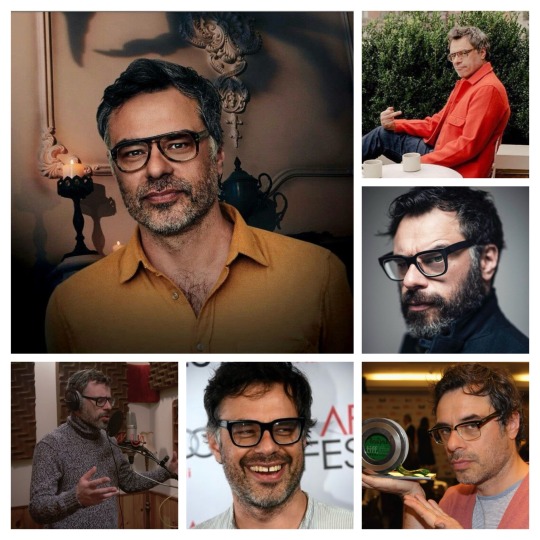
Happy 50th Birthday Jemaine!
I know I’m a little late but I wanted to post something. The previous year was certainly not one of my better years, or anyone else’s I suppose, but there are bright lights that will bring one away from the darkness. It may sound corny but Jemaine has been one of those lights. How exactly? Well, where do I begin? His humor, his quick wit, his humbleness, his incredible talent as actor, and of course his voice and the music. FOTC will always be there even if they never make a new piece of music. I am grateful for that and Bret as well.
Several years ago in an interview he was asked if Hollywood was ever the goal? I believe his answer was something close to “I just wanted to make stuff”. He’s done that and more. So I want to use this post to once again say thank you to Jemaine Clement. Thank for making me laugh especially at times I didn’t want to. Thank you for giving me a new perspective on life. Thank you for the entertainment. Thanks for “the stuff”.
Ra Whanau
#jemaine clement#happy birthday#ra whanau#I know this is corny#oh well#that’s how i feel#I made another collage#this might be a tradition#i’m ridiculous
5 notes
·
View notes
Photo
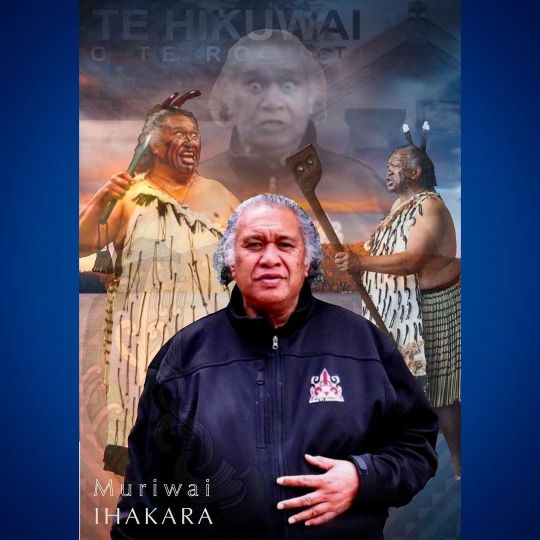
Ra Whanau ki a Koe Matua 💚🎂💙 We (my kids, whanau and I) were so fortunate to have you in our lives, you were always there, an awesome Mentor, Uncle, Matua, Tutor and Papa to us all, from the time you and Whaea returned home and took over the reigns for Te Hikuwai kapahaka, we are forever grateful for your love and your teachings, we will carry on your legacy in the HAKA World and preserve our Marae protocols for Te Hikuwai and the Ngat PIKIAO iwi whanui, arohamutungakore!! 💙🙌🏼💚 (at Rotoiti, New Zealand) https://www.instagram.com/p/CayiFR9JL9Y/?utm_medium=tumblr
0 notes
Text
Mad Maggie
Ingoa: Margaret Kōhere
Tau: 55
Ira Tangata: Wahine
Iwitanga: Kiwi
Ao Kainga: Salvo
Ko Margaret Kōhere — te wahine ka kiia ko Mag Maggie i tetahi ra — i tipu ake i tetahi o nga kokonga tino puehu rawa atu o Salvo kaore he whanau hei korero. I waimarie ia ki te tutaki ki tetahi wairua pukumahi: he tamaiti rikarika ko Walter Fitzroy te ingoa. Kare te tokorua i wehe, a, i o raua tau taiohi, ka noho raua hei hoia. I te mutunga ka tipu te tokorua nei ki te Cracked Talon — he mahi hoia kaha. I konei ka whiwhi ia i tana ingoa ingoa: Mad Maggie. Engari i te hainatanga a Sandringham Kelly i tetahi tiriti me te Syndicate, ka ngaro te tumanako a Maggie mo tetahi Salvo motuhake, ka whakarerea e Fuse mo nga Taakaro, ka tino porangi a Maggie...
Na te whakakore i te tomokanga o Fuse ki roto i nga Taakaro Apex, i whakaaro a Maggie ki te whakaatu i te ngoikore o te Syndicate, me te tumanako ka whakaohooho i a Salvo. Ka whakahiatohia e Fuse he kapa hei patu i a Maggie... ma te tokorua anake kia ngakau ki te ngakau i tae mai ai raua ki te whakaae ki nga whiringa a raua: ka whai tonu a Fuse i te ngahau, ka whai tonu a Maggie i te kaupapa.
Ko te ahua i hinga a Maggie ki te mate i muri i taua whakawhitinga... engari i mau ia e te Syndicate, ka whiua ki te whawhai ki te mate i roto i nga Taakaro Apex. Na ka: ehara i a ia.
0 notes
Text
Ra tiaki mamao
Ra tiaki mamao
JUCELINO DA LUZ
Ratapu Pepuere 13, 2021
HE WAHI TONU TONU 🙂
Ko nga kaha wairua nui e mahi tahi ana a Jucelino mo nga tau 52, ka taea e koe te awhina i a koe ki te whakaora i nga ahuatanga ohorere o to oranga mo to tinana tinana, o kare-a-roto, o to oranga wairua.,Ka mahi a Jucelino i runga i to hiahia me to tono, ki te whakahaere i te hauora, i te putea ranei, i te whanau, i te…
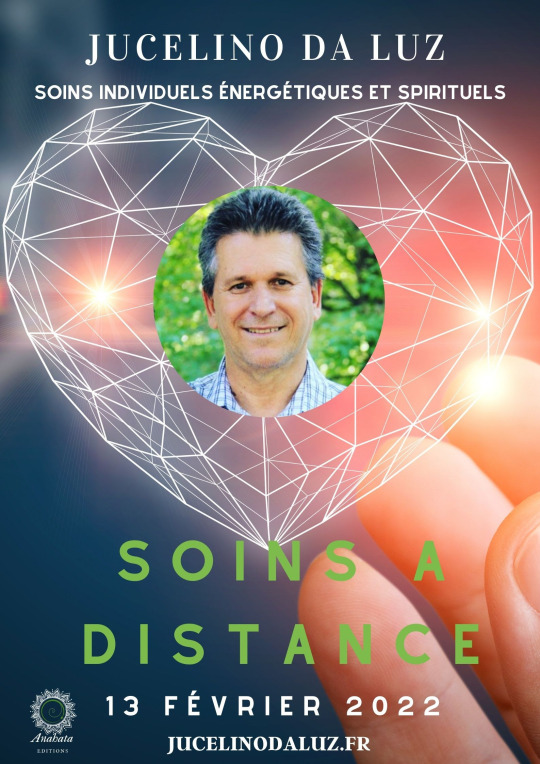
View On WordPress
0 notes
Text
Week 1: Project mātauranga notes and reflection
Māori astronomy is neglected within western views and astronomy because western society only embodies logic and science. However, Māori choose to incorporate spirituality alongside logic and general science and maths they had formed over countless generations by observing the stars.
Māori astronomers have come together to look back at how their ancestors navigated throughout the seas, how they kept in check with what day, month, season it was throughout the year; the main goal is cultural preservation and revitalising. Māori were excellent mathematicians and scientists without Western technology and knowledge. Tatai arorangi was an astronomical knowledge system that affected how Māoriread the stars and calculated basic mathematical principles to form knowledge about the world. Much of this has been lost, which is why S.M.A.R.T (Society of Māori, astronomy, research and tradition) was formed, as western astronomy, science, math, and the general public have a lot to learn from Māori. The purpose is to collect, analyse and share all the surviving knowledge of tatai arorangi.
Māori explanation of the big bang and creation of everything:
In the beginning, there was Te Kore (the nothingness) arose from Te Kore came Te Po (The nights), and there were many nights of darkness and movement of shadows. From this period came the formation of Ranginui (Sky Father) and Papatuanuku (Earth Mother). Both lay tightly together, crunched together with no light. Between them were their six children, who had enough of the darkness and tight space. It was not until Tane, one of the children who separated his parents, pushing Ranginui up in the sky and kept Papatuanuku grounded. Te Ao Marama (light and life) followed after, as Tane hung Whanau Marama (family of light), which included Te Ra (Sun), Te Marama (Moon), Ngā Whetū and Hīnātore.
This is not too dissimilar to western astronomy's theory of the big bang. In the beginning, there was nothingness except for a hot, condensed form of matter which then exploded outwards, creating the universe.
‘The Māori knowledge framework was based around whakapapa korero, which were narratives that held philosophical and technical information. When Europeans analysed a lot of that korero, many of it was reframed into historical and linear types of analysis. A lot of those narratives got broken down and defined as myth or history’ (Tātai arorangi 5:58).
Europeans try to break down past events within their western logical framework, placing past events into two boxes of history or myth. If it does not fit the historical framework, it gets dubbed as myth, as they did with Māori History; it did not make logical sense. ‘Knowledge of tatai arorangi was largely lost or dismissed following colonisation of Aotearoa’ (Tātai arorangi 7:09). Tatai arorangi was very important for the survival of Māori; it helped Māori with cosmology, how and when they should plant, how to tell time and how the orientation of buildings and what should be built in conjunction with the stars.
Māori used specific stars in the sky to denote the time and season the earth was in, explicitly taking a mental note of what star rose first in the morning before the sun. The lunar calendar was an essential system for Māori, noting the moon’s phases to what event should be undertaken that day, e.g. if it was a full moon, it was the best garden today but not to fish. Various tribes and regions had different things that they could do that day, depending on the phase of the moon. Māori soon realised that some months had 32 days and some had 28 days, and soon this came out of sync, so to reset the calendar, they used the rising of Matariki (Pleiades star cluster).
Māori mapped the stars across the horizon, mentally taking note of which star constellation rose in the morning in a particular direction and which star constellation set at night in a particular direction. This created a star compass with waka in the middle and the horizon divided into 32 equal-sized houses.
Works Cited:
"Tātai arorangi". Project Mātauranga. Presented by Ocean Mercier (Ngāti Porou), season 2 episode 8, Pokapū Akoranga Pūtaiao: Science Learning Hub, 2012, https://www.sciencelearn.org.nz/resources/1274-revitalising-maori-astronomy.
0 notes
Text
What to expect to appear in the night sky
(for Wellington, Feb 24th)
Week One - Group research prior to shared experience.
Mars
Mars, appearing as a medium brightness, reddish star in the lower northwest (visible until midnight).
Sirius
Sirius ‘the dog star’ (the brightest) and Canopus (second brightest), bright white stars should be visible just south of overhead.
Crux
Crux, the Southern Cross, is located to the southeast
Orion and Taurus
Just below and to the left of Sirius, the stars Rigel (a bluish colour), and Betelgeuse (orange coloured) should be visible. These are the brightest stars that make up Orion, and looking in between the two, Orion’s belt, a line consisting of three stars can be found. For New Zealanders and places present in the southern hemisphere, Orion’s belt makes the bottom of “the pot”, “the iron pot’ or ‘the saucepan”, whereas Orion’s sword, a fainter line of stars located above Orion’s belt. creates the handle of the pot.
Down and left of Orion’s belt is Aldebaran, a bright orange star that makes one eye of the bull, Taurus. Aldebaran is located on the tip of an upside-down ‘v’ shape that creates the head of Taurus.
For the Southern Hemisphere, the constellations of Taurus and Orion are only visible upside down, the common pictures and drawings of Taurus are brought from the Northern Hemisphere.
Matariki
In the Taurus constellation we can find the Matariki, Pleiades, Subaru, or Seven Sisters cluster of stars. This cluster is both visible and well known to both hemispheres.
There are about a thousand stars that belong to Matariki, but only a few are visible to the naked eye. Matariki is often noted to have seven stars (matariki and her six daughters) however, most iwi observe that there are nine stars in the Matariki constellation. Matariki is also the marker for the Maori New Year, a time in which the yearly calendar is reset in order to keep in sync with Maramataka (the turning of the moon), or the lunar calendar. The new year begins on the first new moon after the star cluster Matariki rises in the eastern sky.
Purakau
Creation of Te Whanau Marama
Maori purakau tells us that Ranginui had a major role in the creation of the sun, stars, moon, and constellations - Te Whanau Marama (the family of light). One version says that two children of Ranginui and Papatuanuku, Tangotango and Wainui (ocean) had their own children: Te Ra (the sun), Te Marama (the moon), Nga Whetu (the stars), and Te Hinatore (moonlight). Tane then took these children and placed them in the sky.
The Stars
Maori used the stars as an indication of season and time, by viewing the stars that rose just before sunrise. The star that appears to sit on the horizon line just before the sun appears informs the season. If Takurua is visible it indicates winter, Rehua on the other hand indicates the summer months.
The Moon
A strong connection is present between astronomy and planting and harvesting. Maramataka (the lunar calendar) had a huge role in when certain activities should be performed, such as harvesting, planting, and fishing. For example Rakaunui (the full moon) was the time to plant crops, as it was thought that the moon drew water from the ground to the surface, nourishing the seedlings.
The moon is also strongly associated with women and the menstrual cycle. Hineteiwaiwa is associated with fertility and the cycle of life. Hina-te-au (female light), Hina-te-po (female dark), Hina-keha (pale moon), and Hinauri (dark moon) all refer to the stages of the waxing and waning moon, a cycle which is thought of as the opening and closing of a doorway through which spirits returned to their original life (Te Ara pp.4).
Maui and the Sun
One prominent purakau of the sun talks about how in the early days of the world's creation, the sun moved too fast across the sky. Days and nights passed by so rapidly that there was not enough time to complete tasks in the day, or to sleep at night. So Maui devised a plan to slow the sun. With the help of his brothers he made several strong ropes, and then hid near where the sun rose from the underworld. When the sun appeared the next morning, Maui and his brothers sprung from their hiding place and threw their ropes over the sun, trapping it in place. Maui beat the sun until it begged for mercy and agreed to slow its path across the sky.
Other Information
Astrology means ‘word’ (logos) or ‘language’ of stars
Astronomy, ‘the measurement of the stars’
Te Ikaroa (the Milky Way), the great fish of Rangi, the Sky Father.
Book: Tātai arorangi, Māori astronomy : Work of the gods / Kay Leather and Richard Hall
520.8999442 Lea
Reference
https://rasnz.org.nz/in-the-sky/sky-charts
https://teara.govt.nz/en/ranginui-the-sky/page-4
This is the work of: Kate
0 notes